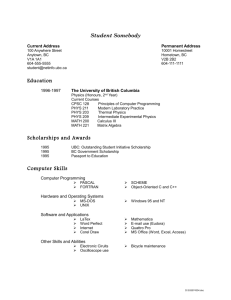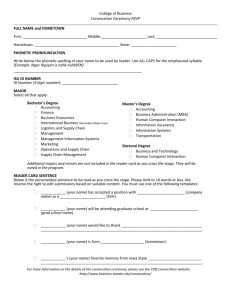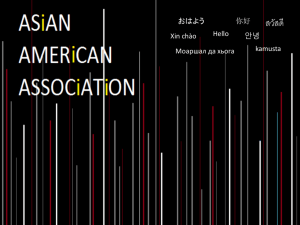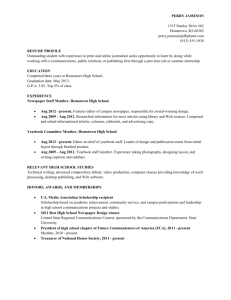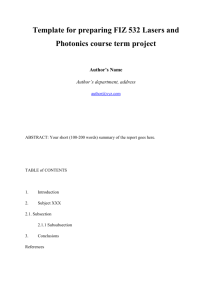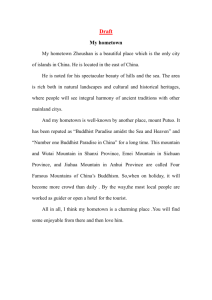Homework 5
advertisement
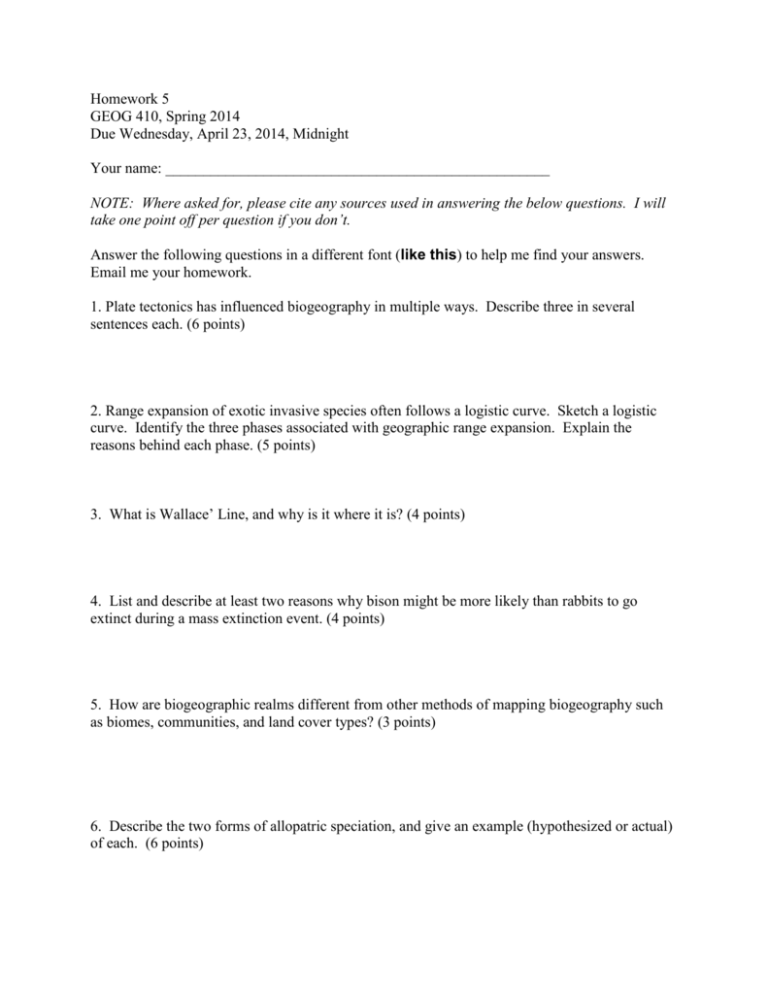
Homework 5 GEOG 410, Spring 2014 Due Wednesday, April 23, 2014, Midnight Your name: ___________________________________________________ NOTE: Where asked for, please cite any sources used in answering the below questions. I will take one point off per question if you don’t. Answer the following questions in a different font (like this) to help me find your answers. Email me your homework. 1. Plate tectonics has influenced biogeography in multiple ways. Describe three in several sentences each. (6 points) 2. Range expansion of exotic invasive species often follows a logistic curve. Sketch a logistic curve. Identify the three phases associated with geographic range expansion. Explain the reasons behind each phase. (5 points) 3. What is Wallace’ Line, and why is it where it is? (4 points) 4. List and describe at least two reasons why bison might be more likely than rabbits to go extinct during a mass extinction event. (4 points) 5. How are biogeographic realms different from other methods of mapping biogeography such as biomes, communities, and land cover types? (3 points) 6. Describe the two forms of allopatric speciation, and give an example (hypothesized or actual) of each. (6 points) 7. Location questions. Remind me of your hometown ______________ and Location #2 __________________. a. What was the climate like at your two locations or their regions during the middle of the last glacial period? What was the general vegetation type then and today? (2 points) Cite your sources. Hometown: Second location: b. For your two locations or their regions, describe a biogeographic corridor and a biogeographic barrier. (2 points) Cite your sources. Hometown: Second location: c. For one of your locations, describe an invasive species. How did it arrive? Is it doing any environmental, ecological, or economic damage? (4 points) Cite your sources. d. What are the biogeographic realms of your two locations? (2 points) Hometown: Second location: e. Describe a plant or animal extinction that has occurred in your locations or the general region in recent centuries. What was the cause? (4 points) Cite your sources. Hometown: Second location: e. Using http://worldwildlife.org/science/wildfinder, click on the map at each of your locations to bring up information about each location’s ecoregion. Using the “Story & Photos” tab at the bottom, what are some rare or endangered plant or animal species in each ecoregion? (2 points) Hometown: Second location: f. Describe the current threats to these ecoregions. (2 points) Hometown: Second location: 8. On a clear day, walk to the top of the hill where the silver UI water tower is above campus; stop where you have a view of Moscow and the surrounding mountains. Answer the below questions. a. (3 points) Describe which of the following major vegetation types you see and where you see them: deciduous forest, evergreen (coniferous) forest; croplands, grasslands, shrublands, other. Look in the near and far distance, 360 degrees. b. (3 points) Why is the vegetation where it is? List some controlling factors, considering both natural and “anthropogenic” (of human origin), for each vegetation type. c. (3 points) Moscow is at the border of the Palouse Prairie to the west and the Rocky Mountains to the east. What are the major causes of this east-west pattern in vegetation type?
